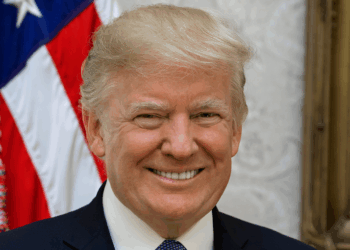President Donald Trump unveiled a plan today to slash the costs of IVF and fertility treatments, fulfilling a campaign pledge to make it more accessible to American families eager to welcome new children into the world.
But pro-life advocates more limits on IVF to stop abortions and destroying human embryos.
The White House initiative, building on a February executive order directing federal agencies to recommend ways to protect IVF access and cut out-of-pocket expenses, aims to ignite a baby boom by easing financial barriers for couples battling infertility.
More than 10 million women in the U.S. have faced difficulties conceiving, according to health experts, with a single IVF cycle often running between $12,000 and $30,000 — a steep hurdle for many aspiring parents.
HELP LIFENEWS SAVE BABIES FROM ABORTION! Please help LifeNews.com with a donation!
In March, Trump embraced the cause with enthusiasm, declaring himself the “fertilization president” while endorsing assisted reproductive services as a vital tool for growing families.
The forthcoming framework includes two key measures designed to foster more births.
First, it would enable employers to offer fertility coverage as an optional benefit, akin to vision or dental plans, allowing workers to opt in and receive support for treatments that could lead to the joy of parenthood. Second, the administration plans to strike a “most favored nation” drug pricing deal with a pharmaceutical company to dramatically lower the cost of hormone-stimulating medications essential to each IVF cycle.
This drug pricing strategy echoes a May executive order Trump signed to align U.S. prices with lower international rates, with recent agreements already reached with companies like Pfizer and AstraZeneca to reduce costs on other medications. By extending this approach to fertility drugs, the plan promises to make IVF viable for far more couples, potentially adding countless little ones to American homes.
The announcement underscores Trump’s pro-natalist vision, a cornerstone of his administration’s push to reverse declining birth rates and strengthen the nation’s future through larger, thriving families.
Yet the effort highlights ongoing pro-life concerns. Often more babies re made in the IVF process than a couple plans to birth and they are often left frozen, aborted or destroyed.
While many celebrate the potential for more lives brought into existence, pro-life advocates have urged “new guardrails” on IVF, citing ethical concerns over the creation and occasional discarding of surplus human embryos.
The February order, signed amid fanfare at Mar-a-Lago, set a 90-day deadline for cost-reduction proposals that lapsed without a comprehensive public rollout. Thursday’s disclosure marks a concrete step forward, though details remain under wraps until the official reveal.
With roughly one in four employers already providing some IVF coverage, the new employer-opt-in model could broaden access significantly, empowering businesses to support their workers’ dreams of building families.




![Hegseth Demands Fitness Requirements, Says 'Fat Troops' 'Not Who We Are' [WATCH]](https://teamredvictory.com/wp-content/uploads/2025/09/Hegseth-Demands-Fitness-Requirements-Says-Fat-Troops-Not-Who-We-350x250.jpg)






